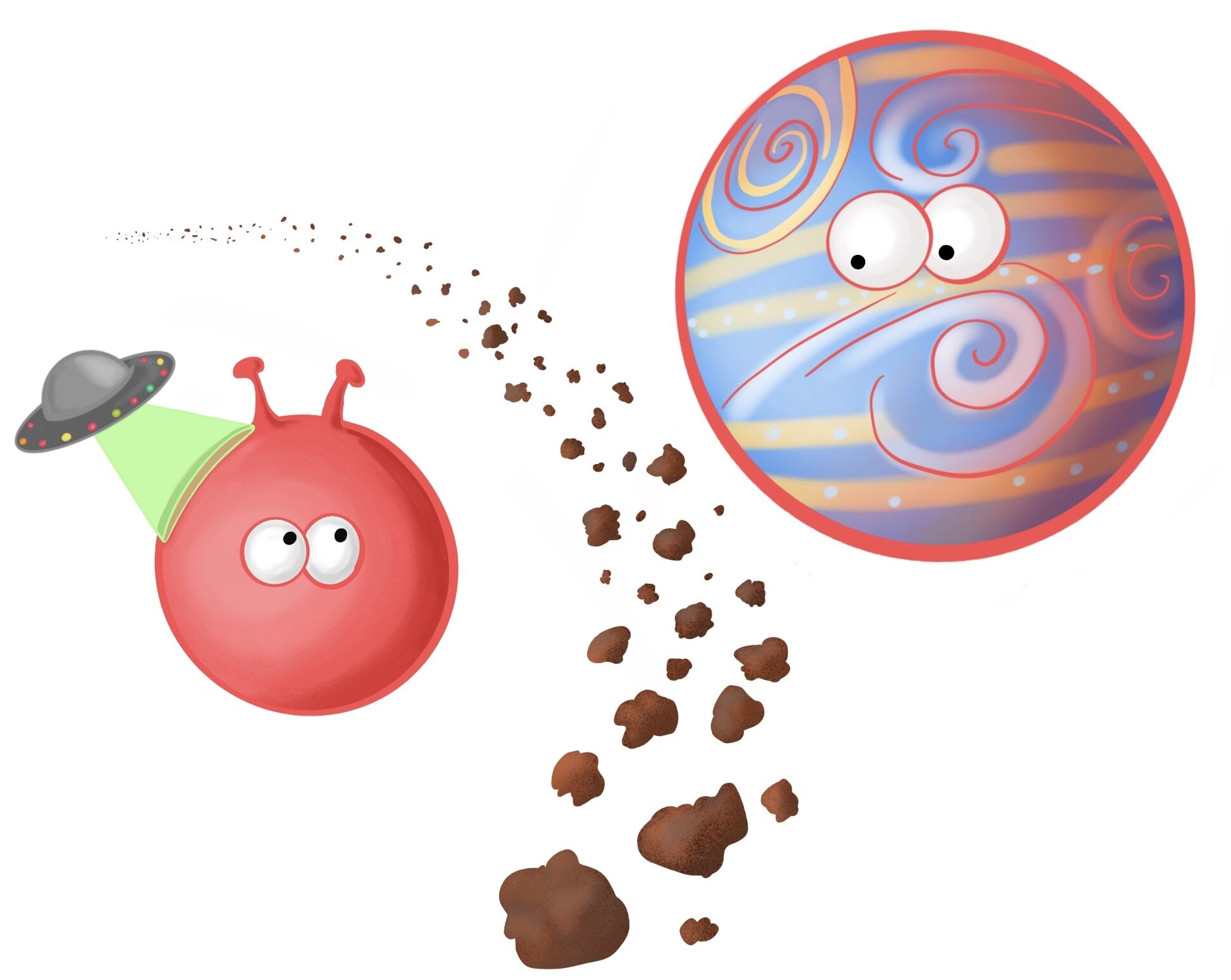Have you ever wondered about those odd space objects that fly through our night sky—like Meteors and meteorites, asteroids and comets? What are they, and what’s the difference between a meteor, meteoroid, or a meteorite? Here’s a fun free PDF download to learn about these objects from outer space, including a mini-poster, a short lesson, and an active review game for the wiggliest among us.
Comet- A comet is a chunk of rock and ice that releases gas as it heats up.
Asteroid and Meteoroid- The Oid Brothers- The O in AsterOid and MeteorOid reminds me of Orbit. Asteroids are big rocks in orbit, and meteoroids are smaller rocks in orbit.
Meteor- Meteors are meteoroids that burn up as they enter earth’s atmosphere. The meteor in our picture is using his burning up in the atmosphere to cook his meat.
Meteorite- Meteoroids that are big enough to hit the surface of the earth are called meteorites.
Comets have a dust tail that reflects sunlight, and a gas tail that shines florescent light.
Comets are made up of ice, rock, metal, and dust. As the icy chunk gets closer to the sun it heats up, causing gases to release in a process called outgassing. This gas makes an atmosphere of gas and dust called a coma, and sometimes a tail, too. Comets actually have two tails: a dust tail and a gas tail. The closer the comet get to the sun, the hotter it gets, and the more gas and dust it releases. So the closer the comet is to the sun, the longer the tails will become. These tails always point away from the sun.
Comets have a highly elliptical orbit. One complete orbit around the sun is a comet’s period. There are short and long comets, but their name has nothing to do with the length of their tails. Instead short comets have a period of less than 200 years. Haleyʻs Comet is a short comet with a period of 75 years (though that doesn’t seem so short to me!) Short comets usually come from the Kuiper Belt, a band of icy space objects past Neptune. Long comets have a period of more than 200 years. Scientists think long comets come from the Ort Cloud, a theoretical distant cloud of space objects.
The Asteroid Belt is a band of dust, asteroids, and meteoroids that is found between Mars & Jupiter.
Asteroids and meteoroids are made up of rock, metal and dust, and they are mainly found in the Asteroid Belt between Jupiter and Mars. Asteroids can be as big as 1,000 kilometers across to as small a 1 meter across. These metallic space rocks orbit our sun, but they are not big enough to be a planet, or round like a planet.
Meteoroids are the same as asteroids, just smaller. They are larger than a grain of dust and smaller than an asteroid. Most could fit in your hand.
Meteors are better known as shooting stars. Meteors are meteoroids that burn up as they enter our atmosphere, leaving a beautiful flash of light in the sky. Even though they make a bright flash of light, they are usually small enough to fit in your hand.
Meteorites are meteoroids or asteroids that make it past our atmosphere and actually hit the earth. Even though most are very small they can cause a lot of damage because they are so fast. Meteoroids (and especially asteroids) rarely make it past our protective atmosphere, so meteorites are rare.
Meteor showers occur when the earth passes through a trail of dust and rocks left behind by a comet or asteroid. These objects burn up in the earth’s atmosphere, creating a meteor shower. Meteor showers are named after the constellations that they appear around in the night sky. Some of the most well known meteor showers are the Perseids and Orionids, named after the constellations Perseus and Orion.
If you can stay up late enough and endure the weather, you can see a meteor shower! It’s best to see a meteor shower after midnight and far from city lights. Use the helpful link below to find the best times for meteor showers where you live!






